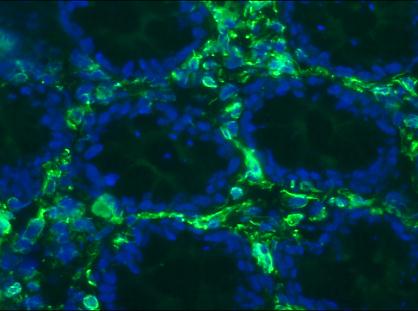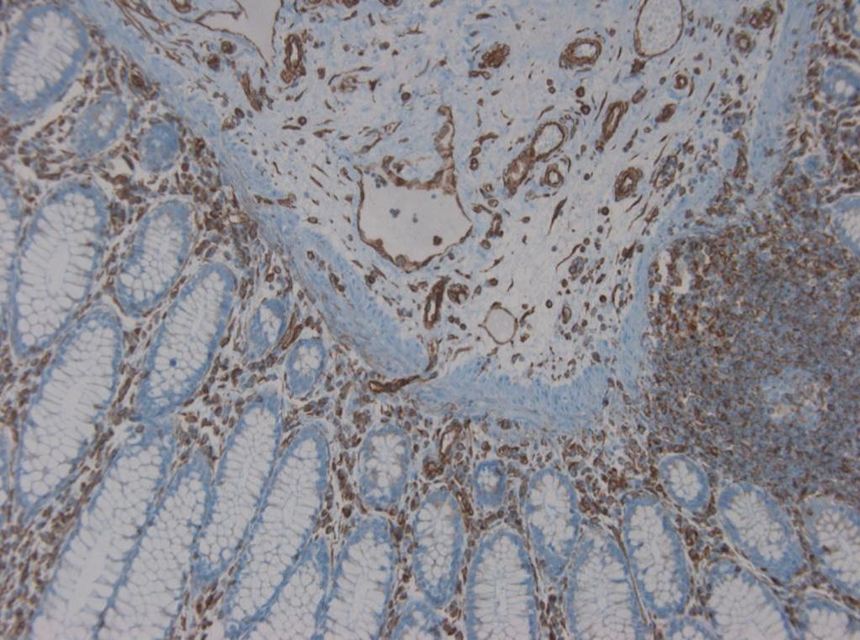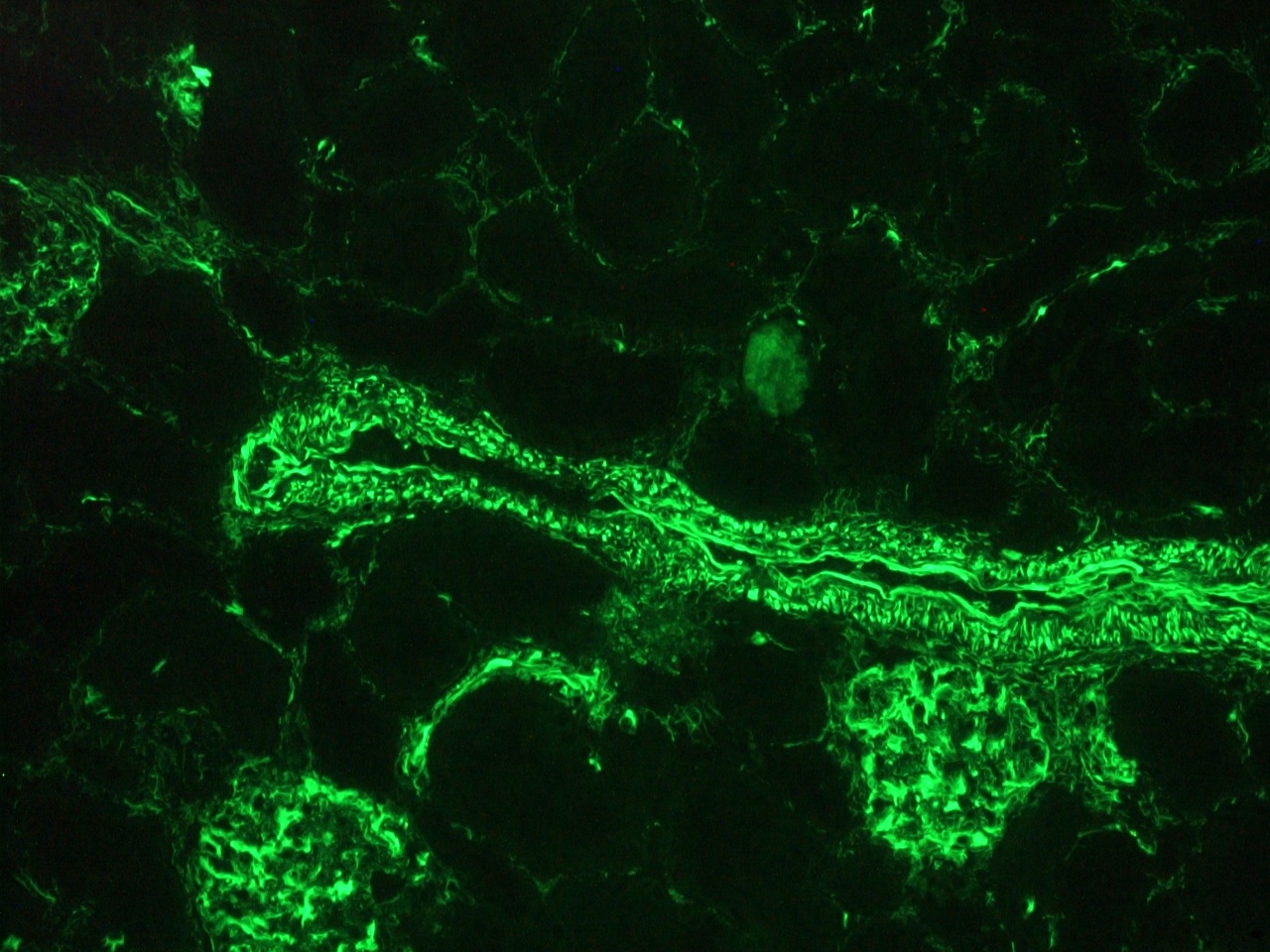Catalogue

Mouse anti Vimentin
Catalog number: MUB1901P| Clone | RV203 |
| Isotype | IgG1 |
| Product Type |
Primary Antibodies |
| Units | 0.1 mg |
| Host | Mouse |
| Species Reactivity |
Canine Caprine Hamster Human Rat Swine |
| Application |
Flow Cytometry Immunocytochemistry Immunohistochemistry (frozen) Immunohistochemistry (paraffin) Western Blotting |
Background
Vimentin (57 kDa) is the intermediate filament protein (IFP) of mesenchymal cells. This IFP however often deviates from the tissue-specific and developmentally regulated pattern of expression. Besides its typical expression in most cultured cells, vimentin is also expressed together with several other IFPs during early stages of development. As differentiation proceeds, vimentin is exchanged for the tissue-specific intermediate filament type. Also in cancers, vimentin is often expressed in addition to the tissue-specific IFP.
Source
RV203 is a Mouse monoclonal IgG1 antibody derived by fusion of SP2/0-Ag14 Mouse myeloma cells with spleen cells from a BALB/c Mouse immunized with a cytoskeletal vimentin extract of calf lens.
Product
Each vial contains 100 ul 1 mg/ml purified monoclonal antibody in PBS containing 0.09% sodium azide.
Formulation: Each vial contains 100 ul 1 mg/ml purified monoclonal antibody in PBS containing 0.09% sodium azide.
Specificity
RV203 reacts exclusively with vimentin, which is expressed in mesenchymal cells and mesenchymal derived tumors e.g. lymphoma, sarcoma and melanoma.
Applications
RV203 is suitable for immunoblotting, immunocytochemistry, immunohistochemistry on frozen and paraffin-embedded tissues and flow cytometry. Optimal antibody dilution should be determined by titration; recommended range is 1:100 – 1:200 for flow cytometry, and for immunohistochemistry with avidin-biotinylated Horseradish peroxidase complex (ABC) as detection reagent, and 1:100 – 1:1000 for immunoblotting applications.
Storage
The antibody is shipped at ambient temperature and may be stored at +4°C. For prolonged storage prepare appropriate aliquots and store at or below -20°C. Prior to use, an aliquot is thawed slowly in the dark at ambient temperature, spun down again and used to prepare working dilutions by adding sterile phosphate buffered saline (PBS, pH 7.2). Repeated thawing and freezing should be avoided. Working dilutions should be stored at +4°C, not refrozen, and preferably used the same day. If a slight precipitation occurs upon storage, this should be removed by centrifugation. It will not affect the performance or the concentration of the product.
Caution
This product is intended FOR RESEARCH USE ONLY, and FOR TESTS IN VITRO, not for use in diagnostic or therapeutic procedures involving humans or animals. It may contain hazardous ingredients. Please refer to the Safety Data Sheets (SDS) for additional information and proper handling procedures. Dispose product remainders according to local regulations.This datasheet is as accurate as reasonably achievable, but Nordic-MUbio accepts no liability for any inaccuracies or omissions in this information.
References
1. Schaart, G., Pieper, F. R., Kuijpers, H. J., Bloemendal, H., and Ramaekers, F. C. (1991). Baby Hamster kidney (BHK-21/C13) cells can express striated muscle type proteins, Differentiation 46, 105-15.
Safety Datasheet(s) for this product:
| NM_Sodium Azide |

Figure 1. Immunohistochemistry with RV203 on a frozen section of human colon showing positive staining in connective tissue cells and no reactivity in epithelial cells.

Figure 2. Immunohistochemistry with RV203 on paraffin section of human colon.

Figure 3. Immunohistochemistry with RV203 on a frozen section of human kidney showing positive staining in blood vessels, glomeruli and connective tissue cells and no reactivity in epithelial cells.



